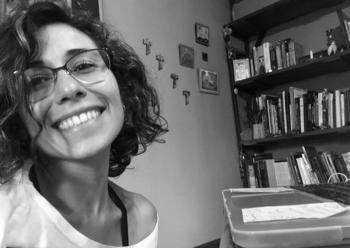Dr. María Soledad Andrade-Díaz

Freie Universität Berlin
Institute of Geography
Modelling Human-Environmental Interactions Group
Associate research-member
My name is María Soledad Andrade-Díaz, and I am a Postdoctoral Researcher in the Modelling Human-Environmental Interactions Group at the Institute of Geography, Freie Universität Berlin, under the supervision of Dr. María Piquer-Rodríguez. I hold a Georg Forster Fellowship from the Alexander von Humboldt Foundation. My research focuses on socio-ecological systems, particularly the transformation of paleochannel grasslands in the South American Dry Chaco due to socio-economic pressures.
I believe that understanding and learning from the real users of these systems is crucial for generating effective and practical recommendations for socio-ecological systems. Integrating this perspective into my research is one of my main interests, emphasizing that decision-making occurs at multiple scales, from local actors, such as smallholder producers, to large-scale agribusiness stakeholders. My current research aims to map ecosystem services in these transformed landscapes, with a special focus on how smallholder, medium, and large-scale producers perceive and value these services. We are particularly interested in mapping plural values to foster participatory management strategies and develop policy recommendations for sustainable land use. Additionally, my research places special emphasis on smallholder producers and, in particular, on the role of Chacoan women in these socio-ecological systems. By examining their relationship with subsistence production systems linked to savanna ecosystems, I aim to highlight how their knowledge and practices shape local livelihoods and interact with ecological processes and conservation opportunities.
Overall, my goal is to identify spatial conservation opportunities and strategies that integrate biodiversity conservation with ongoing land-use management, ensuring sustainable and equitable outcomes for both people and ecosystems.